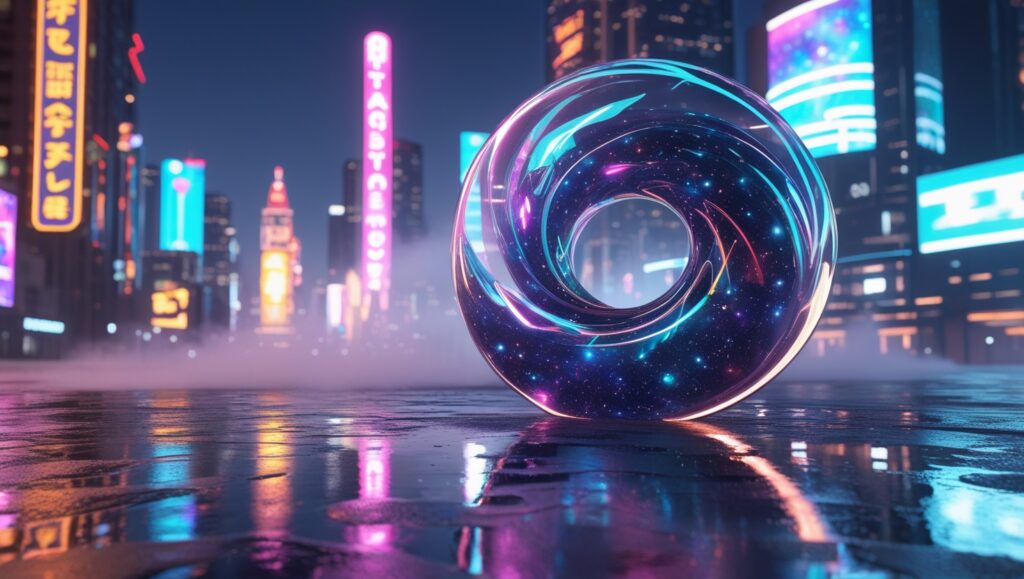
TransPixar: The Future of Transparent Text-to-Video Generation
The world of AI-driven content creation is rapidly evolving, with text-to-video generation technology making significant strides. However, one critical limitation has persisted—achieving transparency in video elements. Imagine trying to create realistic smoke, reflections, or magical effects with existing AI models like Sora or Cling. The results often lack the subtlety and realism needed for professional-grade visuals. Enter TransPixar, a revolutionary AI model designed to generate RGBA (Red, Green, Blue, Alpha) videos, unlocking the next level of creative possibilities for video generation.
Why Transparency Matters in Video Generation
Transparency, controlled by alpha channels, determines how visible or opaque elements in an image or video are. This is crucial in industries like animation and VFX, where blending transparent elements such as smoke, fire, or water into a scene is essential for realism.
However, most existing AI models for video generation have struggled with transparency for several reasons:
- No Alpha Channels: Traditional models generate RGB videos, which lack transparency data.
- Limited Datasets: Datasets used to train these models rarely contain transparent video elements.
The absence of transparency support has restricted the creative potential of AI-generated content, making professional-quality VFX challenging to achieve—until TransPixar emerged.
What is TransPixar?
TransPixar is a groundbreaking AI model built to address the transparency gap. It generates RGBA videos directly from text prompts, empowering creators to include visually complex elements like smoke, reflections, and magical effects with realistic transparency.
How TransPixar Works
TransPixar builds upon the powerful Diffusion Transformer (DiT) architecture commonly used in text-to-image and text-to-video generation but with significant enhancements tailored for transparency:
- Alpha-Specific Tokens: Special tokens in the model explicitly represent alpha channel information, ensuring accurate transparency generation.
- LoRA-Based Fine-Tuning: The model uses Low-Rank Adaptation (LoRA) to modify pre-trained video generation models without compromising their original RGB capabilities.
- Enhanced Attention Mechanisms: TransPixar incorporates optimized attention mechanisms to maintain alignment between RGB and alpha channels, reducing artifacts and mismatches.
These innovations allow TransPixar to generate high-fidelity transparent videos, capturing intricate details like:
- Wispy smoke with gradual transparency
- Realistic fire effects
- Flowing water with subtle reflections
- Hair strands with variable opacity
Real-World Examples: What TransPixar Can Generate
TransPixar takes creativity to new heights by transforming text prompts into stunning visual stories. Here are some examples:
- Prompt: “A crystal-clear waterfall cascading over mossy rocks, with mist gently rising from the base.” – The mist would appear naturally transparent while the rocks remain solid.
- Prompt: “A dragon breathing fire, with transparent flames swirling in the air.” – The fire would blend seamlessly with the background while keeping its dynamic motion.
- Prompt: “A magical glass orb reflecting a swirling galaxy, with a faint glowing aura around it.” – The glowing aura would showcase the alpha channel’s subtlety perfectly.
This level of detail and realism in transparent video generation has been nearly impossible until now.
Beyond Text: Image-to-Transparent Video Generation
While TransPixar excels in text-to-video generation, its capabilities extend to image-to-transparent video generation as well. This makes it a versatile tool for a variety of creative applications:
- Animating Still Images: Convert static images into dynamic, moving scenes with transparent effects.
- Enhancing Existing Footage: Add transparent overlays like smoke, fire, or magical particles to existing video clips.
- Creating Transparent Overlays: Perfect for motion graphics and video editing projects requiring visual elements with alpha channels.
Why TransPixar is a Game-Changer for Content Creators
TransPixar is redefining creative possibilities for:
- VFX Artists: Seamlessly blend complex visual effects into scenes.
- Game Developers: Generate dynamic in-game effects with transparency.
- Animators: Bring characters and environments to life with advanced visual layers.
- Content Creators: Produce eye-catching videos for social media with minimal technical expertise.
Open-Source Innovation: Making AI Creativity Accessible
One of the most exciting aspects of TransPixar is its open-source approach. The developers have released the model’s codebase on GitHub, encouraging collaboration and further advancements in AI-powered video generation. This move fosters innovation by allowing developers, researchers, and creatives to:
- Explore new use cases for transparency in video generation.
- Enhance the model with their datasets.
- Build plugins and tools powered by TransPixar for creative industries.
This prompt captures the essence of TransPixar:
- Transparency: The mist and reflections showcase alpha channel capabilities.
- Visual Complexity: Holographic signs and swirling portals highlight the model’s VFX potential.
- Cutting-Edge Design: The futuristic theme aligns with the AI’s innovation.
Conclusion: TransPixar is Redefining the Future of Video Generation
TransPixar is not just another text-to-video model—it’s a leap forward in creative technology. By introducing alpha channels into video generation, it opens new doors for filmmakers, animators, and VFX artists to create stunning, transparent visual effects directly from text prompts.
As this technology becomes more widely adopted, we can expect a surge in innovative content creation, from cinematic trailers to interactive game environments. With TransPixar’s commitment to open-source development, the future of AI-generated video has never looked more promising. Get ready to explore a world where imagination meets transparency.



